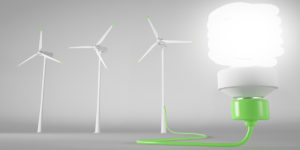Energy Efficiency
By reducing monthly energy bills, energy efficiency can lessen the strain of paying for energy, especially for families with high energy burdens – meaning a larger percentage of their income goes to paying energy bills than the average household. Installing energy-efficient products like LED light bulbs, windows, or efficient appliances can help to bring down a household’s energy burden, making energy more affordable.
Average amount of money saved with solar
The first step to understanding how much solar can save you is to calculate how much you are currently spending on electricity every year. For example, the average annual electricity use required for a U.S. household is 10,649 kilowatt-hours (kWh). Multiply that by the national average electricity rate as of October 2020 ($0.1360 per kWh) and you’ll find that the typical American family is spending just under $1,450 a year on electricity alone.
Solar panels cost money upfront, but will save you money in the long term. The average home can save between $10,000 and $30,000 over the lifetime of your solar panel system. Saving money by reducing your electric bill is one of the main appeals and selling points for solar as a product and home upgrade.
When you compare the cost of utility electricity with home solar, you should keep in mind that you can expect electricity rates to increase annually. Over the past decade, national electricity costs have increased at a rate of around 2.2% per year. Utility rate inflation is an added incentive for solar – when you generate your own energy with a rooftop PV (Photovoltaic) system, you’re locking in energy costs at a constant rate so that you no longer have to consider variable utility rates.
How you can help combat climate change
Simply put, energy efficiency means using less energy to get the same job done – and in the process, cutting energy bills and reducing pollution. Many products, homes, and buildings use more energy than they actually need, through inefficiencies and energy waste. Energy efficiency is one of the easiest ways to eliminate energy waste and lower energy costs. It is also one of the most cost-effective ways to combat climate change, clean the air we breathe, help families meet their budgets, and help businesses improve their bottom lines. Millions of American consumers and businesses choose or invest in energy-efficient products.
How to reduce water heating energy
Water heating is the next largest home energy load after heating and cooling. The best way to reduce water heating energy use is to ensure your water heater’s thermostat is set to 120°F (you no longer have to set your water heater to a higher temperatures to sanitize dishes if your dishwasher has a booster heater). Improvements such as installing low-flow faucets and shower heads, and insulating hot water pipes will also help you save money on water heating. Finally, if the water heater needs to be replaced (water heaters typically last 10-15 years), choose an energy efficient model with a .67 energy factor (E.F.) or a tankless water heater with a .85 E.F. if you use natural gas as the fuel type. Another option for replacing your water heater is to install a heat pump water heater, which typically uses 50 percent less electricity to heat water than conventional electric water heater.
https://www.energy.gov/energysaver/water-heating/reduce-hot-water-use-energy-savings
Examples of energy efficiency
Anywhere that energy is used, there is an opportunity to improve the efficiency. Some products, like energy-efficient light bulbs, simply use less energy to produce the same amount of light. Other products don’t use energy directly, but they improve the overall efficiency and comfort of a house or a building (such as thermal insulation or windows).
- Light bulbs: An LED light bulb that has earned the ENERGY STAR label uses 70-90% less energy than an incandescent light bulb, while providing the same illumination.
- Windows: Energy-efficient windows are made with materials that reduce heat exchange and air leaks, which means you don’t need as much energy to heat or cool a space.
- Insulation: Adding more insulation to an attic keeps the warm air inside from escaping in the winter. In the summer, it keeps hot air out. With good insulation, you won’t need to use as much energy to keep your house warm in the winter or cool in the summer.
- Smart thermostats: Smart thermostats are Wi-Fi enabled devices that control heating and cooling in your home by learning your temperature preferences and schedule to automatically adjust to energy-saving temperatures when you are asleep or away. They can help you lower your energy bills by not spending money to heat or cool an empty house.
- Computer power management: Computers can be set to automatically enter a low-power “sleep” mode when not in use.
Rebates and discounts
By lowering energy use, energy efficiency reduces monthly energy bills and makes energy more affordable for businesses and families. Some energy-efficient products cost more to buy than other options, but they typically save you money over the long term. For example, an energy-efficient electric heat pump water heater could cost about $700 more than a standard electric water heater, but the energy savings typically add up to $3,500 over the life of the equipment. As you can see, the higher purchase price is more than offset by ongoing bill savings, reducing energy costs for consumers and businesses. To address this initial cost barrier, many utilities offer rebates and discounts ranging from $150 to $1000 off the cost of a heat pump water heater. Click here to find information on rebates and other discounts.
Credits:
https://www.energystar.gov/about/about_energy_efficiency
https://www.ovoenergy.com/guides/energy-guides/how-efficient-is-my-home.html
https://www.ovoenergy.com/guides/energy-guides/what-is-energy-efficiency.html



 Solar Services
Solar Services
